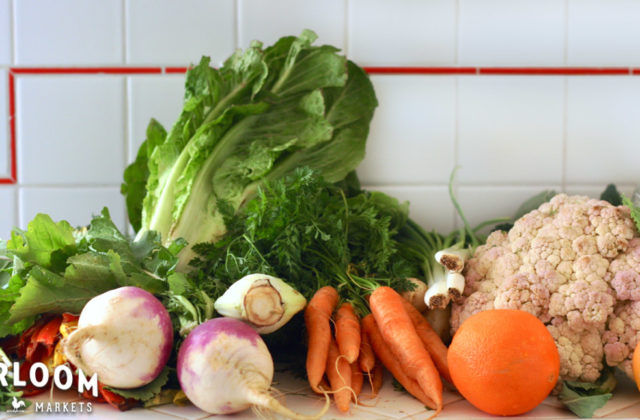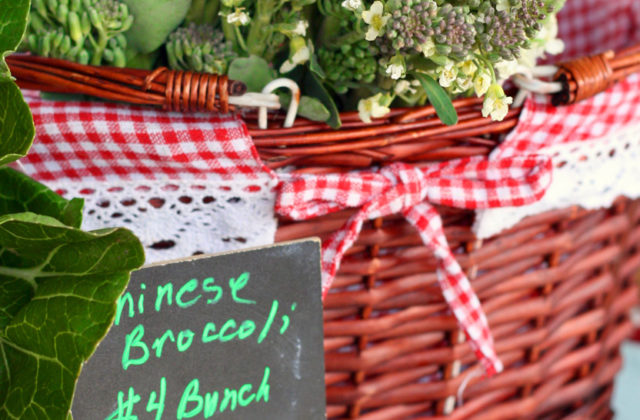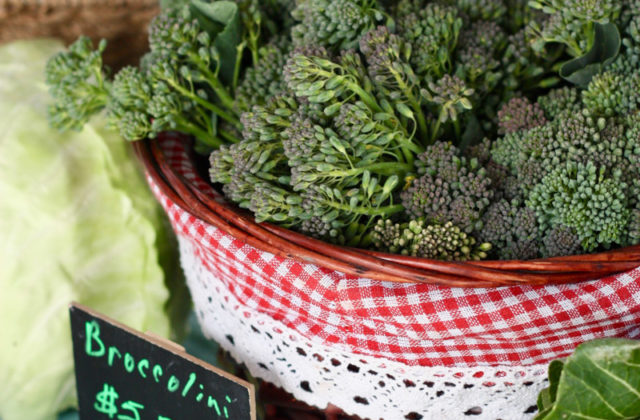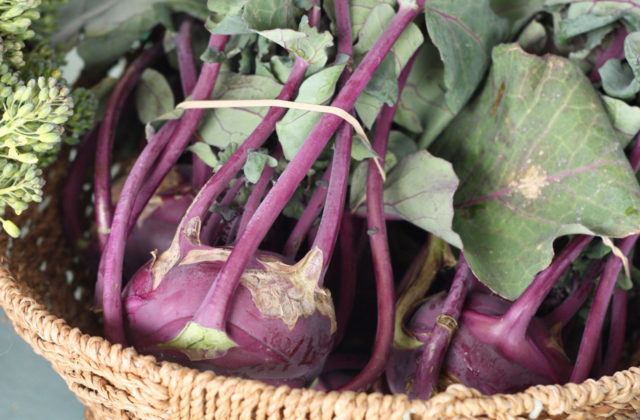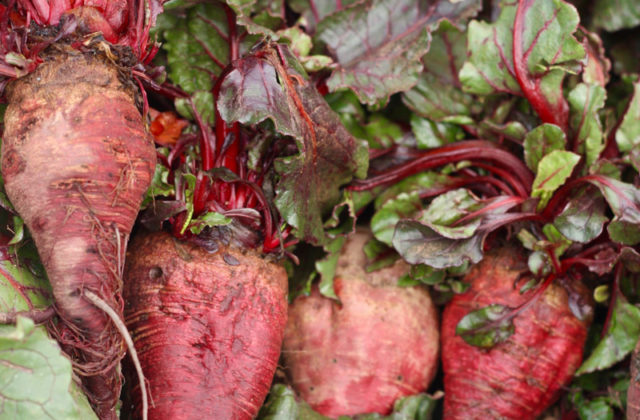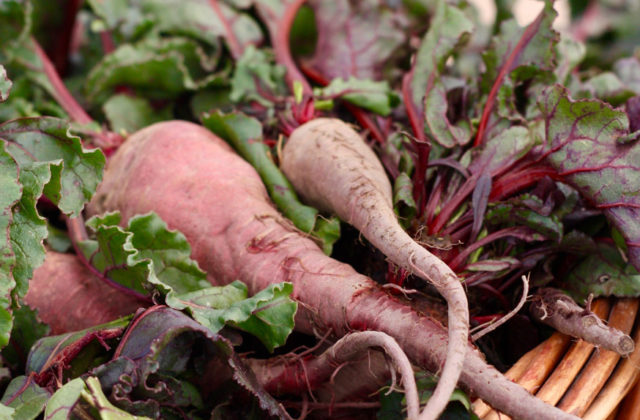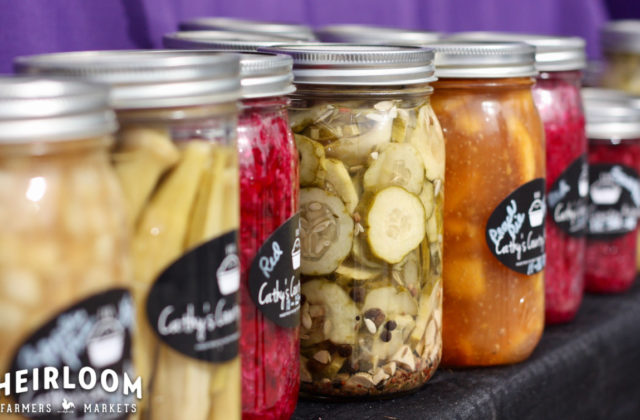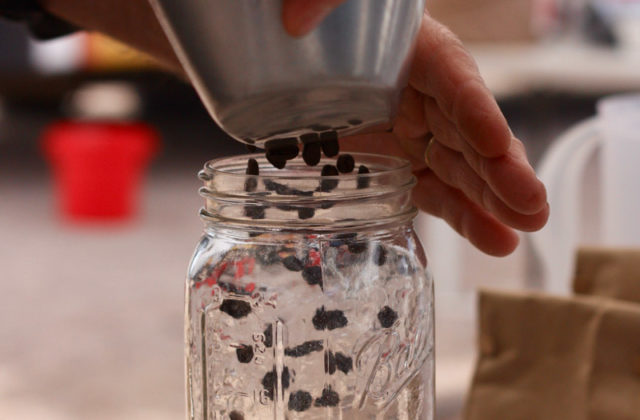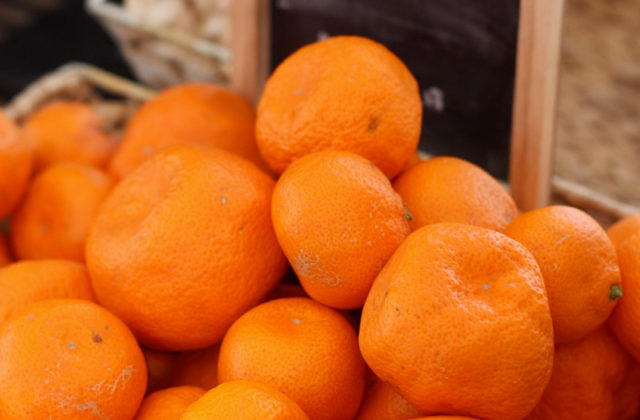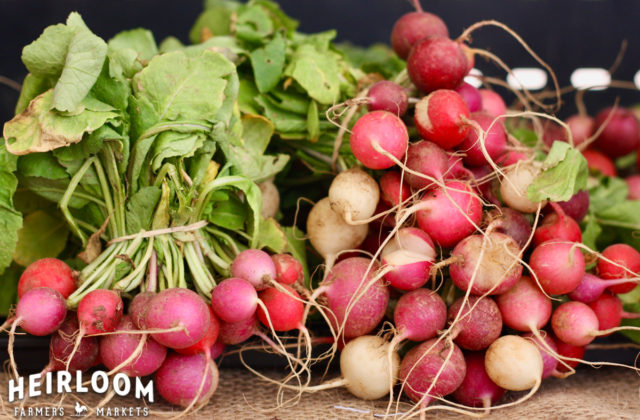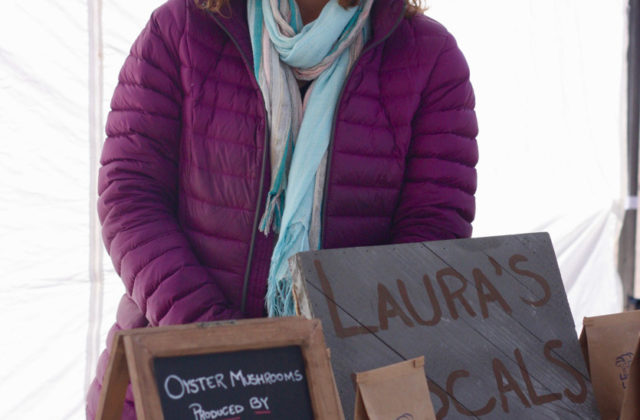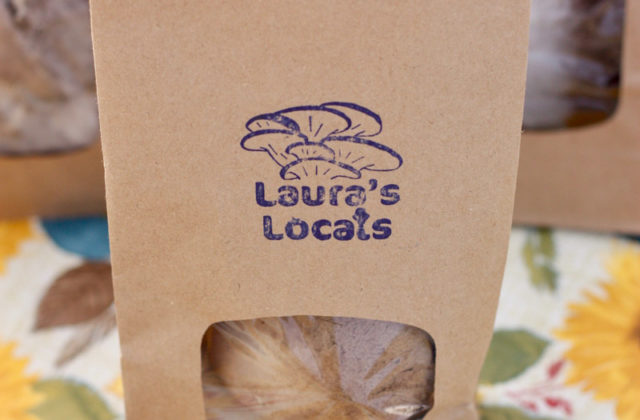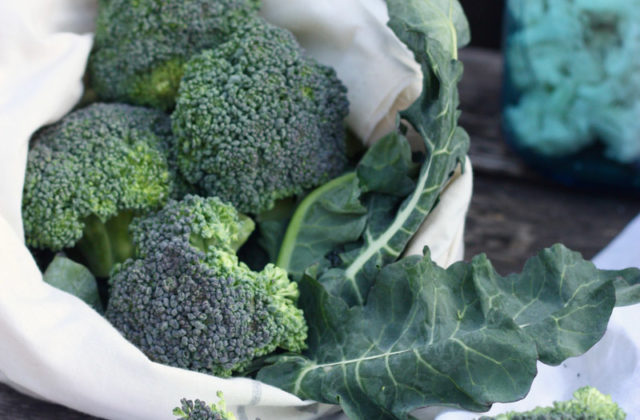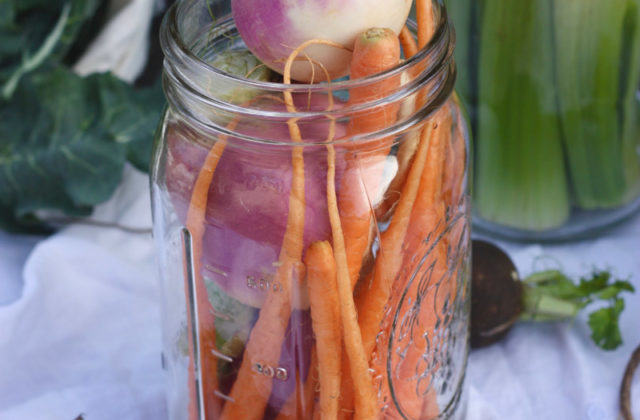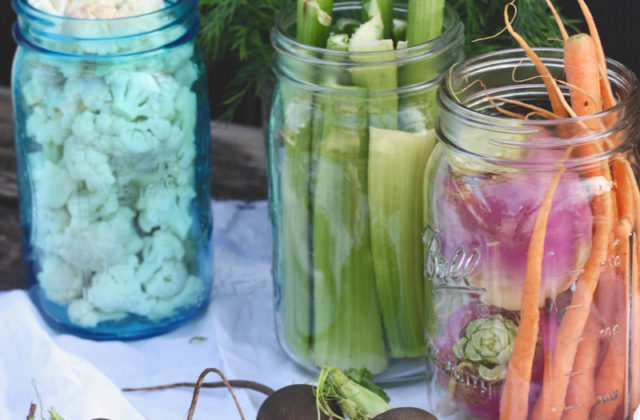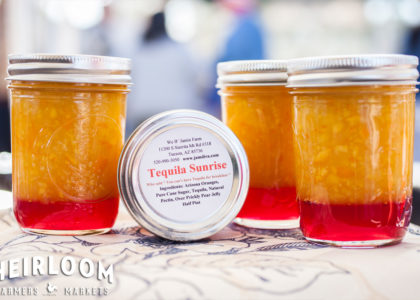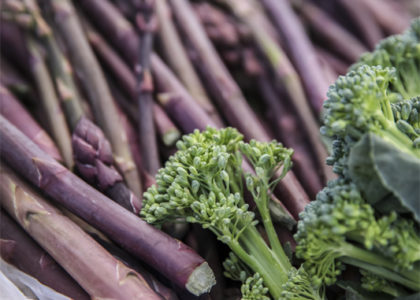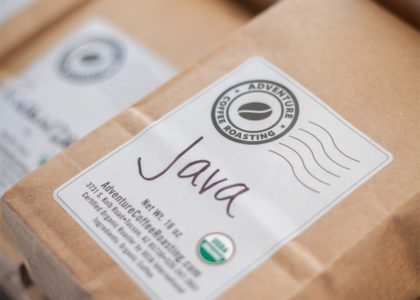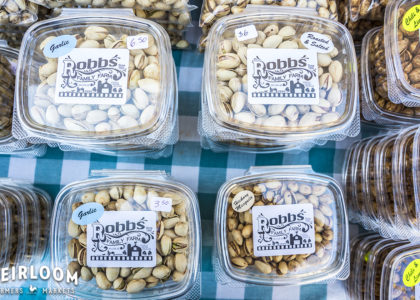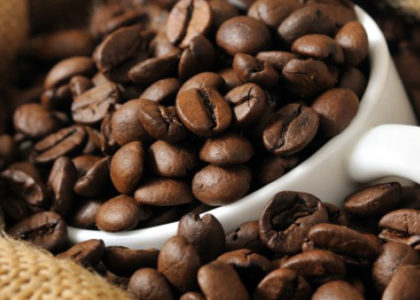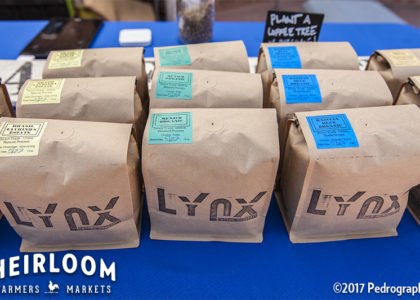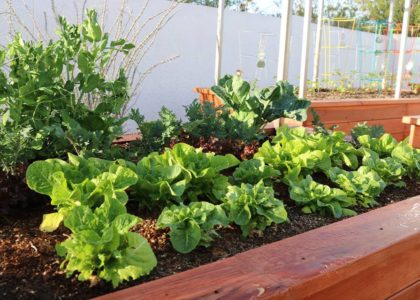Farm to Table Report – MAR/APR 2019
Contents
• Local Food Is Good For The Planet • Giving Back To Planet Earth
• Introducing Our New Market Ambassador Internship Program • Seasonal Recipe
Local Food Is Good for the Planet
Few other professionals work as closely with the earth as farmers do. From day to day, week to week, year to year, they observe soil composition, rainfall, and honey production to a degree that those of us confined to our offices simply cannot. With their drought-resistant heirloom crops, grass-fed beef, and raw honey, the farmers, ranchers, and producers at Heirloom Farmers Markets are tackling environmental issues with their boots on the ground. As we celebrate the 49th Annual Earth Day this April, HeirloomFM will be extending this one-day event through the entire month of April at all the markets, we will also celebrate our local farmers – the people who work every day to make eating in southern Arizona a more sustainable act.
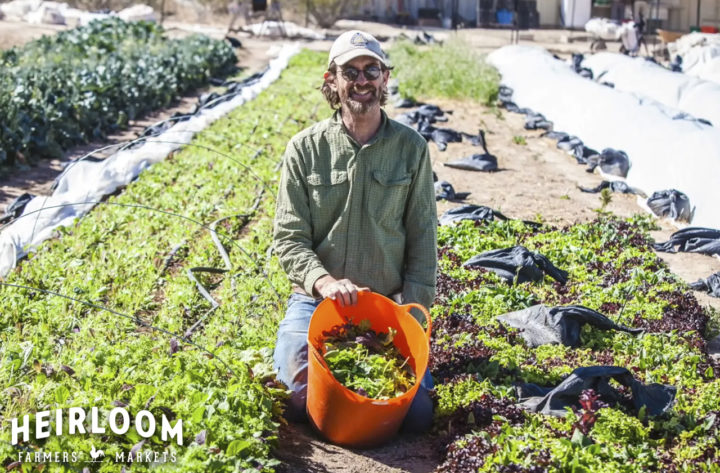 SouthWinds Farm owner Joe Marlow has utilized sustainable farming methods on his land in Benson since day one, just over six years ago. The eight-acre farm is off-grid, largely solar powered, and adorned with a large wind tunnel that helps to shade and insulate crops without harming the environment. Since he began farming in 2012, Marlow has recorded observations and data about the temperatures, moisture, and crops on his land. In just six years, Marlow has witnessed extreme weather patterns in the area, including the hottest June, the wettest July, and the driest August, September, and October in recorded history.
SouthWinds Farm owner Joe Marlow has utilized sustainable farming methods on his land in Benson since day one, just over six years ago. The eight-acre farm is off-grid, largely solar powered, and adorned with a large wind tunnel that helps to shade and insulate crops without harming the environment. Since he began farming in 2012, Marlow has recorded observations and data about the temperatures, moisture, and crops on his land. In just six years, Marlow has witnessed extreme weather patterns in the area, including the hottest June, the wettest July, and the driest August, September, and October in recorded history.
“[Extreme weather] makes it really hard to grow food,” Marlow says. As a result, the economist-turned-farmer has had to adapt both what he grows and the way that he grows it. Marlow now chooses to grow varieties of heirloom produce that can withstand extreme weather as he continues to implement more Earth-friendly farming practices at SouthWinds Farm. In an effort to conserve ground water, the farm’s drip tape irrigation system was recently automated – a win for both water conservation efforts and the hardworking farmers there. Still, he has even bigger plans to make the off-grid farm more sustainable: in the coming year Marlow plans to switch the farm to a biodiesel generator and possibly even install one or two wind generators on the property.
It’s all “a step in the right direction” according to Marlow, but in the long run he is working towards using no-till farming methods. Growing crops without tilling the land allows the soil to remain undisturbed and ultimately creates a healthy growing environment that produces better food and requires less water. In addition to being better for the land, “food will be worth more (nutritionally) and plants will use less water and be less susceptible to disease,” says Marlow. Growing food sustainably takes time, but Joe Marlow is in it for the long haul – for our community, our food, and the planet.
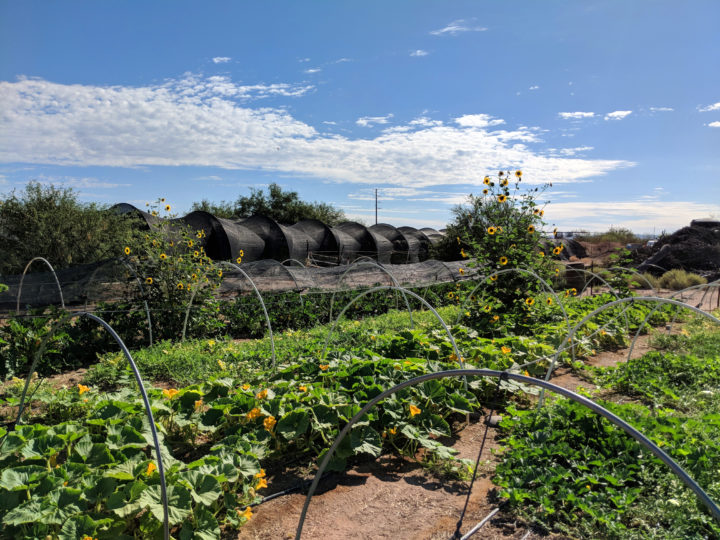
For High Energy Agriculture’s Anne Loftfield, sustainable agriculture is all about growing the soil and using regenerative farming methods on her land in Marana. The complete system of regenerative agriculture consists of three crucial components: soil, plants, and animals. In this cyclical process, plants feed the animals, the animals’ fertilizer feeds the soil, and the soil feeds the plants – over and over again.
Chemicals have no place in regenerative agriculture but (perhaps surprisingly), weeds and insects do. “Weeds and insects are all part of the process,” Loftfield says. Rather than pull all of the weeds on her farm, Loftfield chooses to trim them before they go to seed. When properly managed, weeds and insects add beneficial nutrients to the soil and play a crucial part in the complete regenerative system. To keep the nutrient-rich soil on her farm fertile and healthy, Loftfield uses no-till farming methods. “We try to disturb the soil as little as possible,” she says. “Every time you till, you disturb the soil and the microbes in it. The microbes are what put nutrients into the produce.” Thanks to careful consideration and hard work, Loftfield and her family are growing food that’s good for the planet and the people on it.
There are many more Earth-conscious farmers like Marlow and Loftfield in southern Arizona, and you can find many of them at HeirloomFM. These farmers are devoted to growing food without the herbicides and pesticides that harm the environment. They are farmers that grow heirloom plants and further diversify our crops; ranchers that raise their animals on open pasture rather than in resource-depleting feed lots; beekeepers that place their hives amongst the saguaros and mesquite trees and desert wildflowers. For our small farmers, ranchers, and producers that work as stewards of the land, every day is Earth Day.
Giving Back to Planet Earth
Buying locally grown food isn’t only delicious – it’s better for the planet. According to Barbara Kingsolver in her book Animal, Vegetable Miracle, “each food item in a typical U.S. meal has traveled an average of 1,500 miles.” The oil it takes to get food from farms to our plates is a significant reason why, as of 2004, each individual American consumes approximately 400 gallons of oil for agriculture every year. The solution? Locally grown food. If we all ate just one locally sourced meal a week, “we would reduce oil consumption in the U.S. by over 1.1 million barrels every week,” says Kingsolver.
Eating locally and organically grown meats and produce is a hugely important eco-friendly act in itself. By supporting local vendors at HeirloomFM, you’re buying food that was grown close to home and, as a result, took much less fuel and energy to get to you than food available at the grocery store. Every dollar spent at the farmers market is a vote for a more sustainable food system that values farmers, land, and community over banks and corporations.
Simply buying and eating locally grown food is good for the planet, but there are many ways to be even more eco-friendly when you shop for and cook with food from the farmers market. From biking to the market, to bringing reusable bags and containers, to composting veggie scraps and compostable bags, there are many ways that you can reduce your carbon footprint at the farmers market. Stop by Rillito Park Farmers Market in April to learn how you can help save the planet one week at a time. Each weekend Heirloom has scheduled workshops and entertainment to help further the Earth month celebration including Watershed Management Group, Compost Cats, Mr. Nature’s Music Garden, and more!
Because Heirloom Farmers Markets are located on bike paths and bus routes, you can further reduce your oil consumption by biking, walking, or taking public transportation to the farmers market. HeirloomFM’s annual Bike to the Farmers Market event is the perfect opportunity to try it out! On April 14th, customers are encouraged to bike to Rillito Park Farmers Market on their favorite set of wheels. Cyclists will be rewarded with a free bicycle valet hosted by BICAS and free ice tea from Transit Tea. Plus, deals from local vendors, live music from world-renowned Native American flutist R. Carlos Nakai, and (as always) great food.
When it comes to shopping sustainably at the farmers market, farmers agree that bringing your own bags and storage containers is the first step towards reducing waste. Sturdy tote bags, large baskets, and bike panniers are perfect vessels for holding the bounty of goods you’ll find at the market. Invest in a set of washable cotton bags to store individual produce items like carrots, turnips, and beets; bring glass storage containers for more delicate items like salad greens and tomatoes. If you forget to bring your own bags, be sure to ask if the ones at the market are compostable. Vendors like SouthWinds Farm and Laura’s Locals use packaging that can be turned into soil in your very own backyard compost bin.
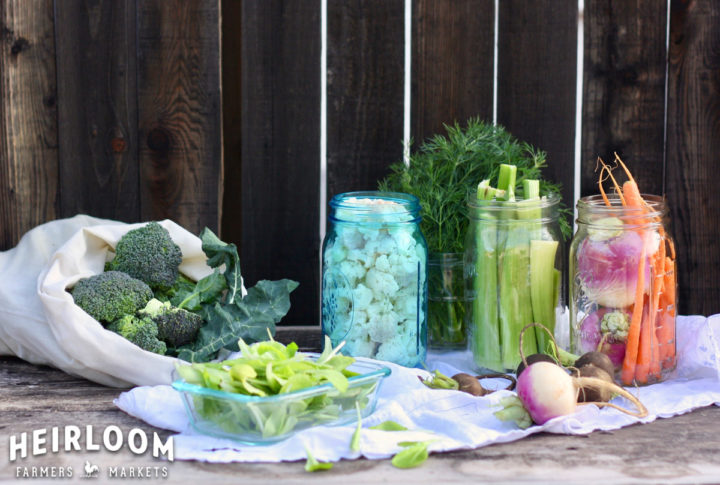
The glass mason jars that hold We B Jamin Farm jam, Bajo Tierra Kitchen kimchi, and Cochise Family Farm pickles can be reused to store pantry items such coffee beans, dried beans, and nuts. (If your kitchen is overflowing with mason jars, simply give them a wash and return them to the vendor to be reused.) Rillito Park Market shoppers can use mason jars to transport coffee beans from Adventure Coffee Roasting and dried beans and pistachios from Robbs Family Farm.
If you plan to refuel at the market after your satisfying bike ride, consider bringing a plate, utensil, and coffee thermos from home. Whether you choose hot or cold brew coffee from Yellow Brick Coffee, Lynx Coffee Roasters, or Adventure Coffee Roasting, it will taste even better out of a sturdy cup. Ask bakers to place that cinnamon bun directly on the plate you brought from home, and dig in to your meal with your favorite fork. Planning ahead can help you reduce waste at the market and on the planet.
Keep your eco-friendly efforts up at home by using as much of your food as possible and composting what you don’t eat. Incorporate broccoli stems into your stir-fry, blend carrot tops into a spring pesto, and sauté radish greens with a little olive oil and garlic, just as you would spinach. Save food scraps – the ends of onions, carrot shavings, parsley stems – to make a delicious slow-cooked vegetable stock at the end of the week. Then, compost the small amount of food waste that’s left with help from Thrive and Grow Gardens’ online composting guide.
Every step you take to eat more locally grown food, use less plastic, and reduce fuel consumption makes a positive impact on the environment. With help from HeirloomFM and their incredible farmers and producers, we can all make planet Earth a better place.
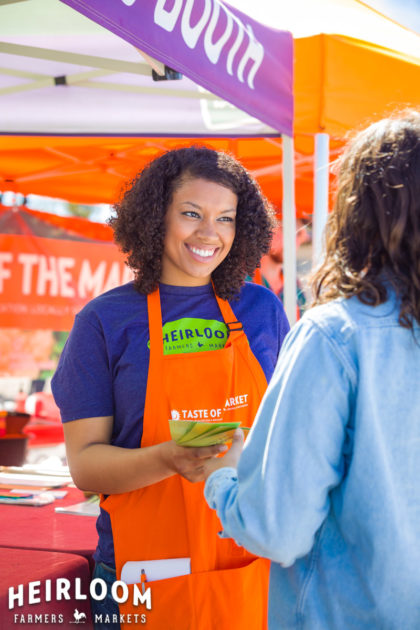 Introducing Our New Market Ambassador Internship Program
Introducing Our New Market Ambassador Internship Program
In partnership with the Rillito Park Foundation and the University of Arizona College of Agriculture and Life Sciences, HeirloomFM has launched a brand new Market Ambassador Internship Program to help SNAP customers shop, cook, and eat locally. The Market Ambassador, Athena, who will be paid with funds from a donation from the Rillito Park Foundation, will never be behind a booth – instead, they will be out and about at the Rillito Park Farmers Market, wearing a can’t-miss orange apron.
SNAP and WIC customers are encouraged to seek out the Market Ambassador to get help “from the moment they receive their benefits to the moment they buy their food,” says HFM Director of Advancement Zoë Anderson. Amongst other things, the Market Ambassador will give tours of the market, connect SNAP customers with farmers, teach customers about what’s in season at any given time, help them create shopping lists and grocery budgets, and brainstorm recipes and meal plans. All of this is in an effort to encourage SNAP customers to return to the farmers market for healthy and locally grown food. “The more that people know about food and nutrition, the bigger impact we have on the community,” says Taste of the Market Program Manager Jackie Mendelson.

